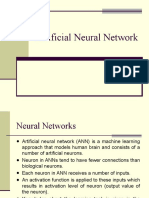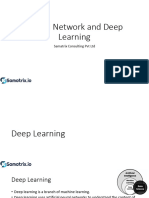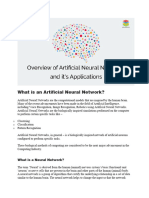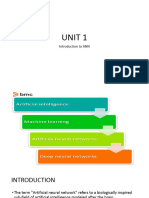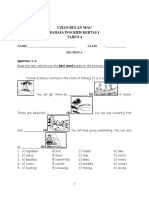0% found this document useful (0 votes)
11 views31 pagesLecture - 01 Introduction To Neural Networks
The document provides an introduction to neural networks, explaining the structure and function of both biological and artificial neurons. It outlines the architecture of artificial neural networks, including input, hidden, and output layers, and discusses various types of neural networks such as feedforward, recurrent, and convolutional networks. Additionally, it highlights applications of neural networks in fields like classification, natural language processing, and healthcare.
Uploaded by
Rakib SheikhCopyright
© © All Rights Reserved
We take content rights seriously. If you suspect this is your content, claim it here.
Available Formats
Download as PDF, TXT or read online on Scribd
0% found this document useful (0 votes)
11 views31 pagesLecture - 01 Introduction To Neural Networks
The document provides an introduction to neural networks, explaining the structure and function of both biological and artificial neurons. It outlines the architecture of artificial neural networks, including input, hidden, and output layers, and discusses various types of neural networks such as feedforward, recurrent, and convolutional networks. Additionally, it highlights applications of neural networks in fields like classification, natural language processing, and healthcare.
Uploaded by
Rakib SheikhCopyright
© © All Rights Reserved
We take content rights seriously. If you suspect this is your content, claim it here.
Available Formats
Download as PDF, TXT or read online on Scribd
/ 31










